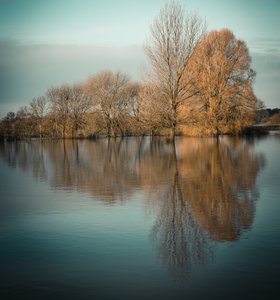
We're all acutely aware of the construction currently going on all across our borough... and what's in the 'pipeline' (pun intended!) But what is the impact of all of this development on our natural drainage?
To understand the impact, first we need to know what the terms mean, so here's our quick guide to get you up to speed.
A 'water course'
Essentially, the water table is an underground boundary between the soil surface and the area where groundwater saturates the spaces between sediments and cracks in rock. The soil surface above the water table is called the unsaturated zone, where both oxygen and water fill the spaces between sediments. Underneath the water table is the saturated zone, where water fills all spaces between sediments. This zone is restricted at the bottom by impenetrable rock. Water table levelsvary between seasons, for example, melting snow or higher rainfall in the winter and warmer temperatures in the summer.
Why are changes important? Rises in groundwater levels can causeflooding, reduction of the strength of the soil (soil erosion) and landslides. Reductions in groundwater levels can cause the soil to consolidate and contract and the ground surface to fall.
A 'flood plain'
Floodplains are generally flat areas of land next to a river or stream. Why are they important? They are natural flooding outlets for rivers, provide a habitat for wildlife and are usually very fertile agricultural areas as floods carry nutrient-rich silt and sediment and distribute it across a widearea. Is it a good idea to build on them – your call!
'Flood alleviation'
The construction of flood walls, banks and planting vegetation to retain water. Temporary measures include metal/plastic barriers, sandbags and pumps. South Tyneside Council have several flood alleviation projects: Cleadon Lea - an embankment and storage area seeded with wetland wildflowers, Sunderland Road - new sections of drainage ditches created and improvements made to existing ditches to increase capacity for surface water, Monkton - creation of marshy areas to help prevent surface water reaching residential areas. You can access South Tyneside Council’s flood alleviation plans here
Many of our traditional sewage systems are already at capacity. Given the predicted increases in development, demand and climate change on our aging infrastructure can only result in increasing our risk of surface water flooding. What do you think?
Copyright © CAST 2024
